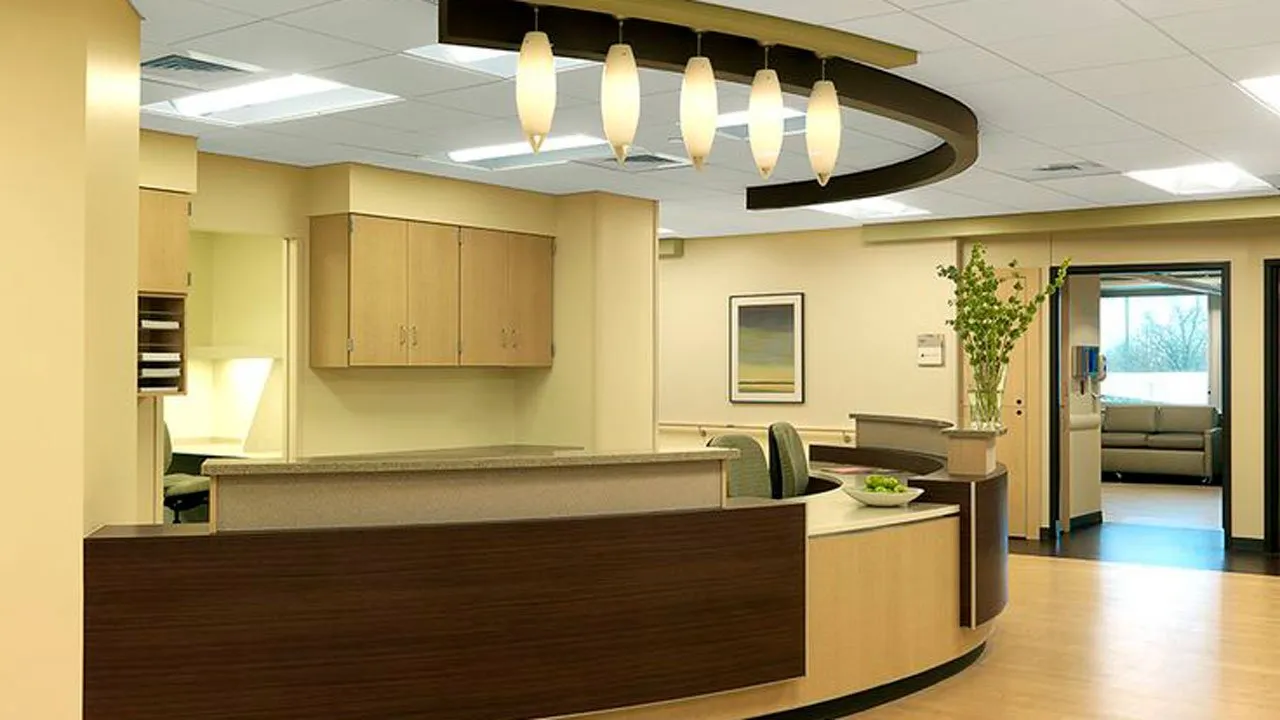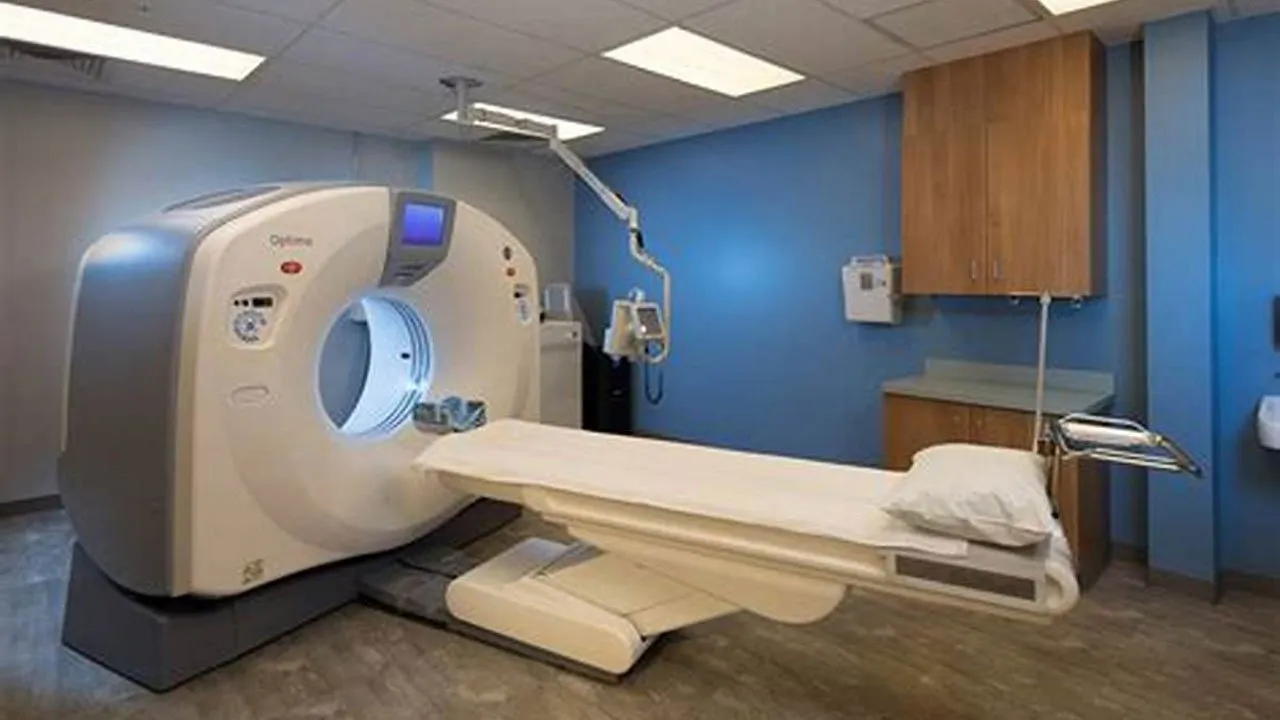Medical Office, Healthcare Facilities Architectural designs

A medical office, also known as a physician’s office or doctor’s office, is a healthcare facility where healthcare providers, typically physicians or other medical professionals, offer various medical services to patients. These facilities serve as the primary point of contact for patients seeking medical care, diagnosis, treatment, and routine health maintenance. Here are some key characteristics and aspects of a medical office:
- Healthcare Providers: Medical offices are staffed by healthcare professionals, including physicians, nurse practitioners, physician assistants, and nurses. The specific composition of the staff may vary depending on the type of medical practice and its specialties.
- Primary Care and Specialties: Medical offices can be primary care practices, providing general healthcare services, or specialty practices focused on specific medical fields such as cardiology, dermatology, pediatrics, obstetrics, gynecology, or internal medicine.
- Patient Appointments: Patients typically schedule appointments to receive medical care, allowing healthcare providers to manage patient flow efficiently.
- Diagnostic Services: Medical offices often provide diagnostic services such as physical examinations, laboratory tests (blood work, urinalysis, etc.), and diagnostic imaging (X-rays, ultrasounds, etc.).
- Treatment and Prescriptions: Healthcare providers diagnose and treat a variety of medical conditions. They can prescribe medications, provide medical advice, and offer treatment plans.
- Preventive Care: Medical offices focus on preventive healthcare, offering services such as vaccinations, health screenings, and health education to help patients maintain their well-being.
- Chronic Disease Management: For patients with chronic conditions (e.g., diabetes, hypertension), medical offices help manage their conditions through regular check-ups and medication management.
- Referrals: When patients require specialized care beyond the scope of the medical office, healthcare providers may issue referrals to specialists or hospitals.
- Electronic Health Records (EHR): Many medical offices use electronic health records systems to manage patient information, medical histories, and treatment plans securely and efficiently.
- Billing and Insurance: Medical offices handle billing, insurance claims, and payment processing for medical services rendered to patients.
- Patient Education: Healthcare providers in medical offices often educate patients about their health conditions, treatment options, and preventive measures.
- Wellness Programs: Some medical offices offer wellness programs or services related to nutrition, fitness, and lifestyle management to promote overall health and well-being.
- Administrative Staff: Medical offices employ administrative personnel to handle scheduling, reception, medical records, and other administrative tasks.
- Clean and Comfortable Environment: Medical offices aim to provide a clean, welcoming, and patient-friendly environment to ensure a positive patient experience.
- Telemedicine Services: With advancements in technology, some medical offices now offer telemedicine services, allowing patients to consult with healthcare providers remotely.
- Patient Confidentiality: Strict patient confidentiality and privacy protocols are maintained in medical offices to protect patients’ sensitive medical information.
Medical offices serve as essential components of the healthcare system, offering accessible and personalized medical care to individuals. They serve as the first point of contact for many patients seeking medical attention and are crucial in providing both primary care and specialized care, depending on the needs of the community and the expertise of the healthcare providers.
Medical Office Design Overview
A medical office is a facility where healthcare professionals provide outpatient medical services to patients. It serves as a primary point of contact for patients seeking medical care, diagnosis, treatment, and follow-up services. Medical offices can vary in size and scope, ranging from small private practices to large multi-specialty clinics.
Key Features of a Medical Office Design:
Reception Area: The reception area is the first point of contact for patients and should be welcoming and comfortable. It should have a front desk for check-in and check-out processes, seating for patients, and a designated area for patient registration and paperwork.
Examination Rooms: Examination rooms are where healthcare providers assess and treat patients. They should be equipped with essential medical equipment, such as examination tables, diagnostic tools, and storage for medical supplies. The design should prioritize patient privacy and comfort.
Waiting Area: The waiting area should provide a comfortable and calming environment for patients while they wait for their appointments. It should have sufficient seating, reading materials, and possibly a children’s play area. Natural light and soothing colors can contribute to a positive patient experience.
Consultation Rooms: Consultation rooms are where healthcare providers meet with patients to discuss medical conditions, treatment plans, and provide counseling. These rooms should be private and equipped with comfortable seating for patients and healthcare providers.
Administrative Area: The administrative area is where the medical office staff performs administrative tasks, such as scheduling appointments, managing medical records, and billing. It should have workstations, storage for files, and a designated area for staff meetings and collaboration.
Accessibility: Medical offices should be designed to be accessible to all patients, including those with disabilities. This includes features such as ramps, wide doorways, accessible restrooms, and signage for visually impaired individuals.
Infection Control: Infection control is crucial in medical offices to prevent the spread of diseases. The design should incorporate features such as hand hygiene stations, proper ventilation systems, and easy-to-clean surfaces to minimize the risk of infections.
Technology Integration: Medical offices should be equipped with the necessary technology for efficient and effective healthcare delivery. This includes electronic medical record systems, telemedicine capabilities, and communication tools for seamless coordination between healthcare providers.
Safety and Security: The design should prioritize the safety and security of patients, staff, and medical records. This includes measures such as secure entrances, surveillance systems, and proper storage of sensitive information.
Privacy: Patient privacy is essential in medical offices. The design should ensure that patient information is kept confidential, with soundproof walls and proper placement of windows and doors.
It is important to note that the design of a medical office should comply with local building codes, regulations, and healthcare industry standards. Additionally, the specific requirements and design considerations may vary depending on the type of medical practice and the services provided.
What are the key features of a medical office design?
Key Features of a Medical Office Design:
Reception Area: The reception area is the first point of contact for patients and should be welcoming and comfortable. It should have a front desk for check-in and check-out processes, seating for patients, and a designated area for patient registration and paperwork.
Examination Rooms: Examination rooms are where healthcare providers assess and treat patients. They should be equipped with essential medical equipment, such as examination tables, diagnostic tools, and storage for medical supplies. The design should prioritize patient privacy and comfort.
Waiting Area: The waiting area should provide a comfortable and calming environment for patients while they wait for their appointments. It should have sufficient seating, reading materials, and possibly a children’s play area. Natural light and soothing colors can contribute to a positive patient experience.
Consultation Rooms: Consultation rooms are where healthcare providers meet with patients to discuss medical conditions, treatment plans, and provide counseling. These rooms should be private and equipped with comfortable seating for patients and healthcare providers.
Administrative Area: The administrative area is where the medical office staff performs administrative tasks, such as scheduling appointments, managing medical records, and billing. It should have workstations, storage for files, and a designated area for staff meetings and collaboration.
Accessibility: Medical offices should be designed to be accessible to all patients, including those with disabilities. This includes features such as ramps, wide doorways, accessible restrooms, and signage for visually impaired individuals.
Infection Control: Infection control is crucial in medical offices to prevent the spread of diseases. The design should incorporate features such as hand hygiene stations, proper ventilation systems, and easy-to-clean surfaces to minimize the risk of infections.
Technology Integration: Medical offices should be equipped with the necessary technology for efficient and effective healthcare delivery. This includes electronic medical record systems, telemedicine capabilities, and communication tools for seamless coordination between healthcare providers.
Safety and Security: The design should prioritize the safety and security of patients, staff, and medical records. This includes measures such as secure entrances, surveillance systems, and proper storage of sensitive information.
Privacy: Patient privacy is essential in medical offices. The design should ensure that patient information is kept confidential, with soundproof walls and proper placement of windows and doors.
It is important to note that the design of a medical office should comply with local building codes, regulations, and healthcare industry standards. Additionally, the specific requirements and design considerations may vary depending on the type of medical practice and the services provided.
What technology should medical offices integrate for efficient healthcare delivery?
Medical offices should integrate the following technologies for efficient healthcare delivery:
Electronic Medical Record (EMR) Systems: EMR systems allow healthcare providers to store, manage, and access patient medical records electronically. This technology streamlines the documentation process, improves accuracy, and enables easy sharing of patient information between healthcare providers.
Telemedicine Capabilities: Telemedicine refers to the use of technology to provide remote healthcare services. Integrating telemedicine capabilities allows medical offices to offer virtual consultations, remote monitoring, and follow-up appointments. This technology improves access to healthcare, reduces travel time for patients, and enhances overall efficiency.
Communication Tools: Effective communication is crucial for efficient healthcare delivery. Medical offices should integrate communication tools such as secure messaging platforms, video conferencing software, and collaboration platforms. These tools facilitate quick and secure communication between healthcare providers, enabling them to collaborate, share information, and make informed decisions.
Appointment Scheduling Systems: Implementing appointment scheduling systems can streamline the process of booking and managing patient appointments. These systems can automate appointment reminders, reduce no-shows, and optimize the scheduling of healthcare providers’ time. Patients can also benefit from online appointment booking and self-service options.
Patient Portals: Patient portals are secure online platforms that allow patients to access their medical records, schedule appointments, request prescription refills, and communicate with healthcare providers. Integrating patient portals improves patient engagement, empowers patients to take an active role in their healthcare, and reduces administrative tasks for medical office staff.
Remote Monitoring Devices: Remote monitoring devices, such as wearable sensors and mobile health apps, enable healthcare providers to monitor patients’ vital signs and health conditions remotely. These devices can transmit real-time data to medical offices, allowing for proactive interventions and personalized care plans. Remote monitoring technology can improve patient outcomes and reduce the need for frequent in-person visits.
Health Information Exchange (HIE): Health Information Exchange systems facilitate the secure sharing of patient health information between different healthcare organizations. Integrating HIE technology enables medical offices to access relevant patient data from other healthcare providers, improving care coordination, reducing duplicate tests, and enhancing patient safety.
It is important for medical offices to carefully select and implement technology solutions that align with their specific needs, workflows, and compliance requirements. Additionally, training and support for healthcare providers and staff are essential to ensure the effective utilization of these technologies.
Sources:
“Medical Office Design” by Jain Malkin
“Healthcare Spaces No. 9: Medical Office Building Design” by Roger Yee
“Healthcare Information Technology Exam Guide for CompTIA Healthcare IT Technician and HIT Pro Certifications” by Kathleen McCormick
“Healthcare Information Systems, Second Edition” by Karen A. Wager, Frances W. Lee, and John P. Gl












